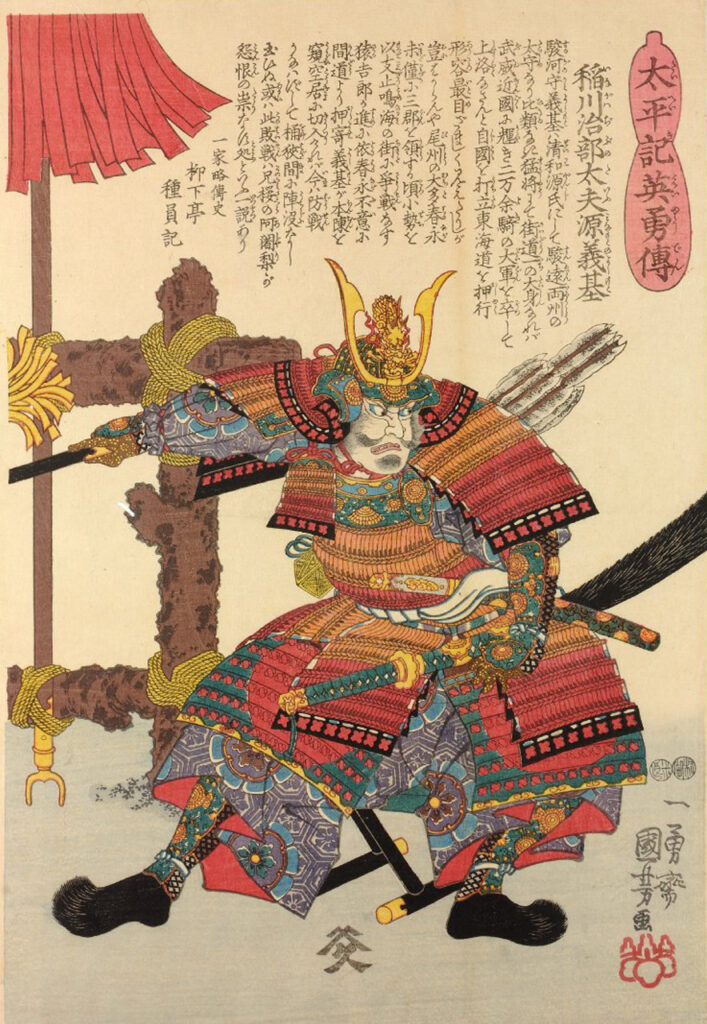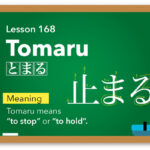

今川義元 IMAGAWA Yoshimoto
1519 – 1560
Daimyo Who Once Conquered the Great Land of the Tokaido Area
The Battle of Okehazama is one of the biggest and most well-known battles in Japanese history, and Imagawa Yoshimoto was the leader of the Imagawa clan that participated in the battle. Because he lost in this battle to Oda Nobunaga whose army size was significantly smaller than Yoshimoto’s, he may give an impression to some that he was a weak daimyo. However, he was unmistakably clever and intelligent. Yoshimoto was once even called “the best archer on the Kaido” and “the man who would conquer Japan soon.” These reputations of his left many historians wondering why he has lost his most significant battle. This story will reveal that it was because of his lack of “luck.” Yoshimoto fought against his rival, the Oda clan, with every expectation of Yoshimoto’s victory, but the battle did not turn out as expected.
.
Raised in A Temple
Yoshimoto was born in 1519 in Shizuoka Prefecture. Yoshimoto, who had four elder brothers, was sent to the temple at age four. During this time, the youngest siblings would usually be sent to the temple to master the Buddhist path because they were less likely to succeed in the family. Yoshimoto practiced monk training and studied a lot at a temple in Kyoto with an educator/babysitter, Sessai. Due to this great academic training, Yoshimoto had knowledge of politics as well as reading and writing. He also got opportunities to interact with nobles and cultural figures who encouraged Yoshimoto to acquire general education and manners.
.
Back Home as a Samurai
possible theories for their death, such as suicide and assassination, but the truth remains unknown. Yoshimoto became the first in succession to the inheritance right and the reign of the family; therefore, he decided to leave his temple with Sessai. Some opposed Yoshimoto’s coming back as a leader of the Imagawa clan. A man named Fukushima, who had been working as an excellent vassal in the Imagawa clan while Yoshimoto was in the temple, also did not like to accept Yoshimoto and bring about the war. With the support of Sessai and Hojo, the greatest power in Japan at this time, Yoshimoto defeated Fukushima, and he started to reign the Imagawa clan. Nevertheless, there was still an internal conflict between his vassals.

.
Clever Policies Rebuilt the Towns
Each town used to compete for yields of rice that indicated their economic strengths. The three towns that Yoshimoto ruled were so poor that the rice harvest seldom reached the average, even after adding up all the harvests from the three towns. This propelled Yoshimoto to implement new policies to rebuild the towns. For example, Yoshimoto took a survey of the land area, its number of people, and the amount of harvest of the entire town so that they were able to collect a fair tax. He also focused on taking good care of farmers who would later participate in the war and educating them to have patriotism. The knowledge and wisdom that Yoshimoto acquired in the temple allowed him to devise many clever strategies which eventually increased their economic strength.
.
Yoshimoto in A Big Slump
In 1537, Yoshimoto allied with the Takeda clan because he believed that getting along well with neighboring towns was the only way to protect his own towns. However, some other towns found offense with the alliance so they attacked Yoshimoto, robbing his territory. Not only did Yoshimoto lose that battle, but there were also more battles he had to participate in to fight. Although Yoshimoto was not good at fighting wars and kept losing, some groups/clans joined Yoshimoto’s companions.
At the time, not many things were going well with Yoshimoto. He was supposed to welcome Ieyasu Tokugawa, who would achieve the unification of the country later, but Ieyasu mistakenly went to other clans.
.
Fight Against the Oda Clan Once Again
In 1548, the Oda clan once again invaded the surrounding area, and Yoshimoto was in a crisis. Yoshimoto formed an army with Sessai as a general leader to challenge the battle with the Oda clan. He won a huge victory over the Oda army this time. With this victory, Yoshimoto gained more power and recognition from the whole country.
.
How Yoshimoto Enlarged the Territories
In 1551, Nobuhide Oda, the head of the Oda clan, died. While people were in grief and confusion, Yoshimoto began to invade the territory of the Oda clan. Yoshimoto made his daughters marry individuals from neighboring towns just so he could form a relationship and a large coalition power. With this wise operation, the number of territories that Yoshimoto had at that time was enormous. He was called “the man who would conquer Japan soon.” But meanwhile, Sessai, who has been supporting Yoshimoto as his right-hand person, passed away.
.
Yoshimoto’s End in A Big Battle
In 1560, Yoshimoto finally led an army of 20,000 and attacked the Oda clan. This is the famous battle, the Battle of Okehazama, that divided the fate of the Imagawa and Oda families. Yoshimoto’s victory was expected as the Oda clan only had a few thousand soldiers. The Imagawa clan had previously already won some smaller battles with the Oda army on their way to Oda’s. On the day of the battle, Imagawa’s main camp was struck by heavy rain. In the midst of such heavy rain, the Imagawa army was unexpectedly combatted by the Oda army’s surprise attack. In the chaotic attack, Yoshimoto was killed and his soldiers lost their fighting spirit. The battle of Okehazama ended with a shocking victory for the Oda clan. With the death of Yoshimoto, Imagawa’s power decreased to the point of the Imagawa clan’s destruction, and that changed Japan’s power dynamics significantly. Nobunaga Oda, the leader of the Oda clan, grew its power rapidly.
.
.
.
.
.
.




